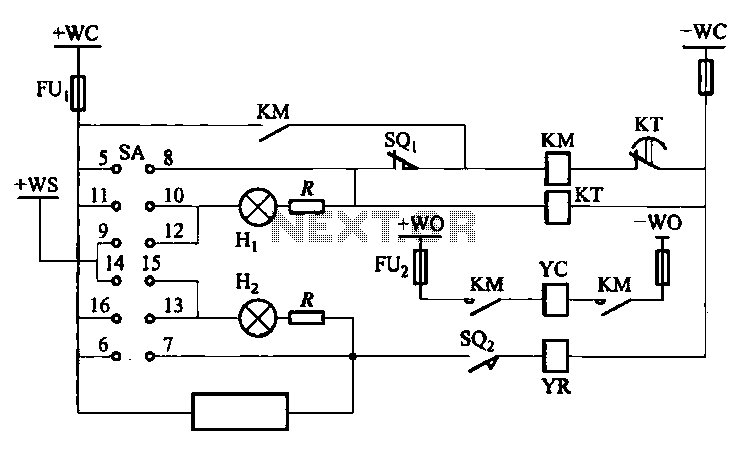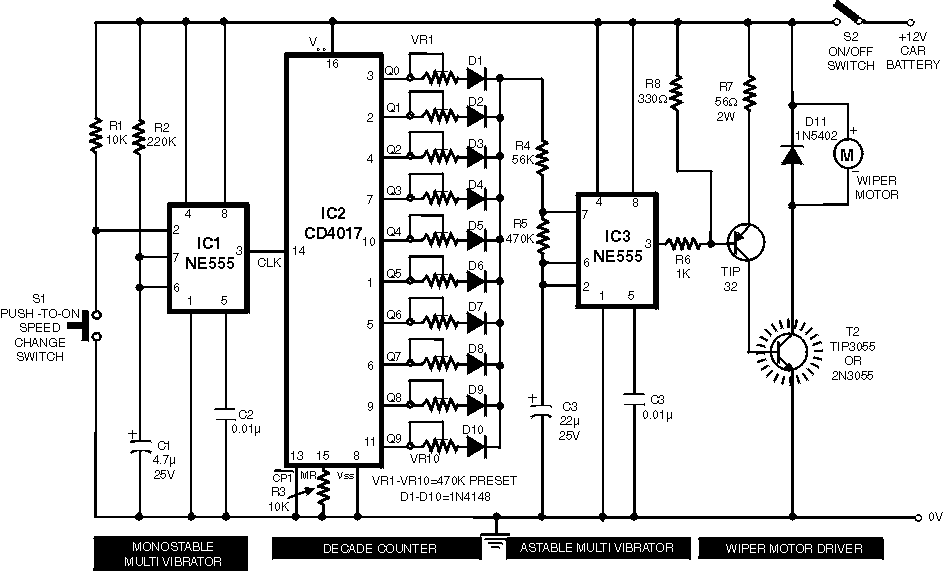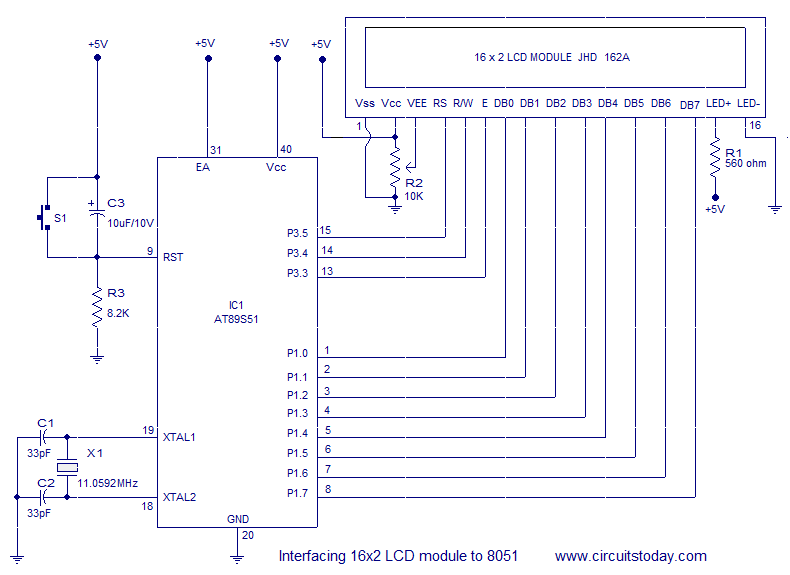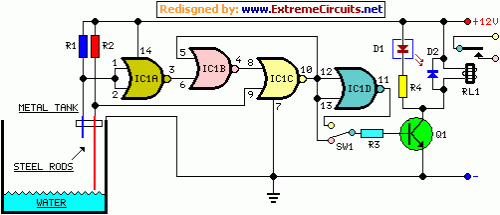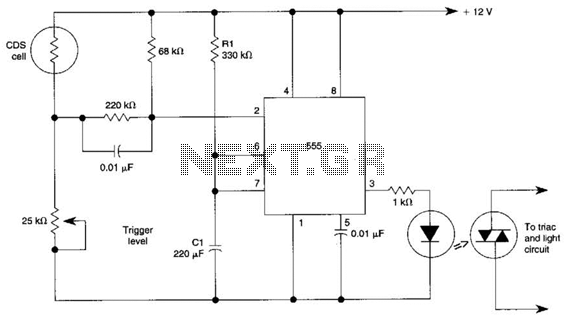
Direction and speed control
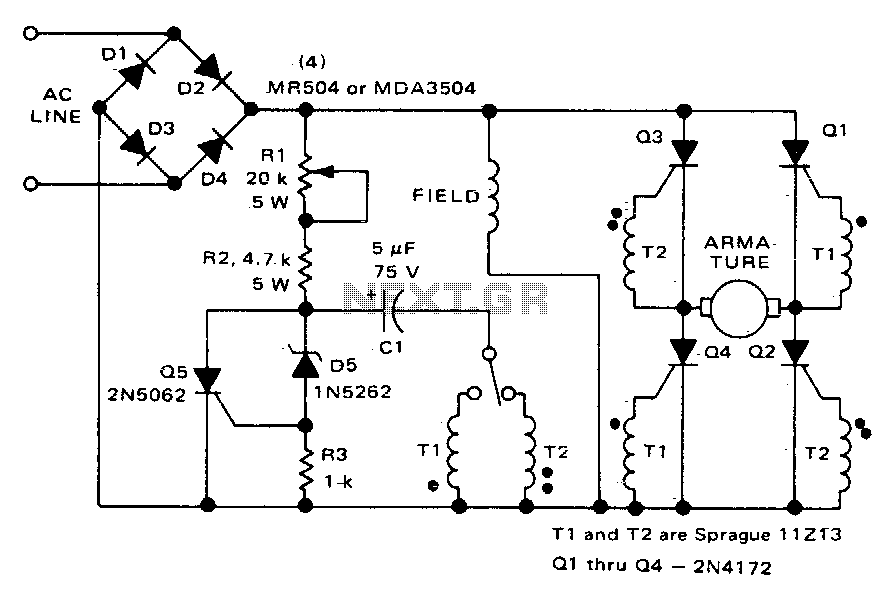
This circuit functions similarly to the one depicted in Fig. 57-4. The key differences include the placement of the field across the rectified supply and the armature being positioned within the SCR bridge. Therefore, the field current is unidirectional while the armature current is reversible, allowing for reversible motor rotation. Additionally, potentiometer R1 regulates the speed.
The described circuit utilizes a Silicon Controlled Rectifier (SCR) bridge configuration to control a DC motor's operation. In this setup, the motor's field winding is connected to a rectified DC supply, providing a constant magnetic field. The SCR bridge, which consists of four SCRs arranged in a full-bridge configuration, allows for control of the armature current. By adjusting the firing angle of the SCRs, the effective voltage applied to the armature can be varied, enabling speed control.
The use of a potentiometer, designated as R1, directly influences the firing angle of the SCRs. By varying the resistance of R1, the control circuit alters the phase delay at which the SCRs are triggered, thus modifying the average voltage supplied to the armature. This adjustment not only controls the speed of the motor but also facilitates direction reversal. By changing the triggering sequence of the SCRs, the polarity of the voltage across the armature can be reversed, allowing the motor to rotate in the opposite direction.
This circuit design is particularly advantageous in applications requiring precise speed and direction control, such as in robotics and conveyor systems. The combination of a unidirectional field current and a reversible armature current provides flexibility in operation while maintaining efficient performance. Proper thermal management and component ratings must be considered to ensure reliable operation, especially in high-load scenarios.This circuit operates like the one shown in Fig, 57-4, The only differences are that the field is placed across the rectified supply and the armature is placed in the SCR bridge. Thus the field current is unidirectionali)ut armature current is reversible; consequently the motor"s direction of rotation is reversible
Potentiometer Rl controls the speed. 🔗 External reference
The described circuit utilizes a Silicon Controlled Rectifier (SCR) bridge configuration to control a DC motor's operation. In this setup, the motor's field winding is connected to a rectified DC supply, providing a constant magnetic field. The SCR bridge, which consists of four SCRs arranged in a full-bridge configuration, allows for control of the armature current. By adjusting the firing angle of the SCRs, the effective voltage applied to the armature can be varied, enabling speed control.
The use of a potentiometer, designated as R1, directly influences the firing angle of the SCRs. By varying the resistance of R1, the control circuit alters the phase delay at which the SCRs are triggered, thus modifying the average voltage supplied to the armature. This adjustment not only controls the speed of the motor but also facilitates direction reversal. By changing the triggering sequence of the SCRs, the polarity of the voltage across the armature can be reversed, allowing the motor to rotate in the opposite direction.
This circuit design is particularly advantageous in applications requiring precise speed and direction control, such as in robotics and conveyor systems. The combination of a unidirectional field current and a reversible armature current provides flexibility in operation while maintaining efficient performance. Proper thermal management and component ratings must be considered to ensure reliable operation, especially in high-load scenarios.This circuit operates like the one shown in Fig, 57-4, The only differences are that the field is placed across the rectified supply and the armature is placed in the SCR bridge. Thus the field current is unidirectionali)ut armature current is reversible; consequently the motor"s direction of rotation is reversible
Potentiometer Rl controls the speed. 🔗 External reference
